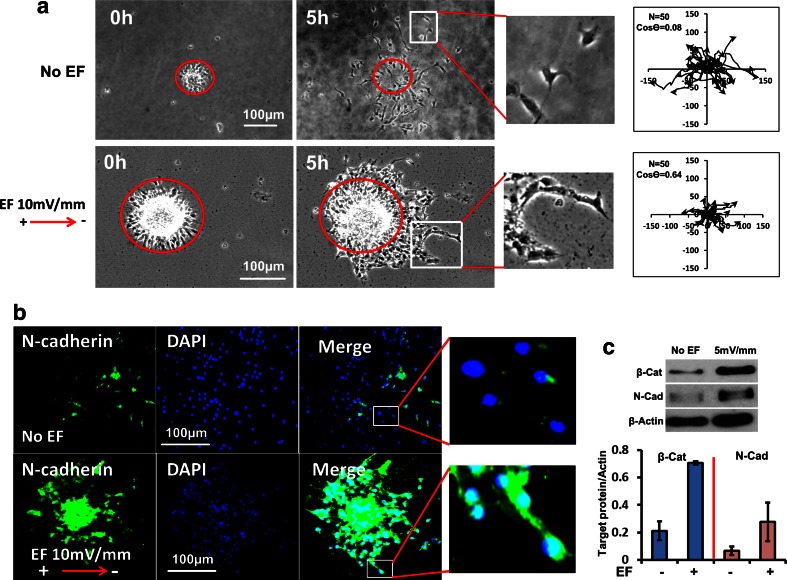Fig. 2.
An applied physiological EF induced chain migration in neurospheres. a Neurospheres from mouse SVZ were cultured in electrotaxis chambers and an EF of physiological strength (10 mV/mm) was applied for 5 h. In upper row - no EF control, neuroblasts migrated in random directions and did so largely separated and scattered independently from each other (see enlarged image). Lower row - EF applied with cathode to the right. EF-stimulated neurones remained closely adherent to each other and migrated together in chains (see enlarged image at right). Tracks of neuroblast migration are shown in the plots at right. The migration of individual cells is plotted starting at the centre and lines radiate out to show the path and the end point of migration at 5 h. Axes are in μm. N is cell number and Cos θ represents the directedness of cell migration. If Cos θ = 1, it means all cells have migrated directly to the cathode. Control plots (no EF - upper right) show that migration occurs in all directions, randomly. EF-exposed plots (lower right): by contrast migration was directed cathodally (to the right). b Neurospheres were seeded in electrotaxis chambers with/without an applied EF for 5 h and then the cells were fixed and stained immunofluorescently with an N-cadherin antibody. Cultures exposed to a very low physiological EF of 10 mV/mm (lower row) show strikingly enhanced N-cadherin staining compared to no EF controls (upper row). c A very low physiological EF (5 mV/mm) increased the expression of N-cadherin and β-catenin as determined by Western blotting (3 h exposure to EF). Actin is a loading control. The ratio of protein expression/actin is shown below the corresponding western blots

